CFP | Submit your manuscript for Archivo Papers volume 6, 2026
Haunted Archives of Livingness
Visual Culture and the Politics of Care in the Age of Ecological Entanglement
Independent Researcher
“En un mundo donde son grandes biólogos, botánicos, ecólogos y zoólogos aquellos que llegan a describir en latín la mitad de lo que un agricultor analfabeto sabía del mundo vivo que le rodeaba, marquémonos un farol y vayámonos a esos mundos que parece que sólo salen en las películas de Tarzan y en la televisión.”
[In a world where great biologists, botanists, ecologists and zoologists are those who can describe in Latin half of what an illiterate farmer knew about the living world around him, let’s call a bluff and go to those worlds that seem to only appear in Tarzan movies and on television.]
El Sátiro del Medio Ambiente, “Naturaleza eres tú”,
Alfalfa. Crítica Ecológica y Alternativas, nº 8/9/10, 1978, pp. 10-12
“History is telling. We need multiple, competing, unresolved, fragmentary, shattered, partial, and contradictory tales. Rather than a singular story history tells, if we open up the archives to ask different questions, other answers lurk. These are also telling. And tell them, we must.”
Banu Subramaniam, Botany of Empire.
Plant Worlds and the Scientific Legacies of Colonies, 2024, X
The archive, in its variables of collecting private or public documents, relating to a person, family, municipality or state, is configured as a circumscribed place, with limited access or reserved for specific users. Its historical connection – especially the archive as institution – with power and various forms of long-standing hegemony, while it has contributed to arousing its fascination and a certain aura of mystery in recent decades, has been paralleled with a profound questioning and recognition of its problematic “neutral technology” (Azoulay, 2019).
To consider that a collection of written texts, visual works, volumes, and photographs, and moving images composes a corpus can lead us back to the etymology of the Latin term, which takes on this meaning much later. Before, it referred to a body, individual, person, or living being, as well as a corpse, inanimate body, matter, organism, and structure. If we then maintain the polysemy of the corpus to diversify the archives in which they live, we will suddenly find ourselves faced with a variety of typologies that expand the very notion of the archive, push it out of protective walls, dirty it, contaminate it and regenerate it, making it living matter and in constant metamorphosis (Coccia, 2020).
We can read this corpus as an archive that self-generates, feeds itself, feeds back, tells itself, passes on, and lets itself be consulted. A system of knowledge that owns itself as an archive, which “should be seen as a contact zone between past and present but also between temporally diverse and interconnected processes of documenting and consuming information” (Tortorici, 2018), available to be activated and put into relation in a constant becoming in transformation. What can this approach teach us about the wonder, the abject, the beauty, the waste in the planet when they become “haunted archives of livingness” (Subramaniam, 2024)? In this context, photography emerges as a central medium through which haunted archives are constituted, activated, and contested. Photographs not only preserve the visual remnants of ecological and political violence, but also act as spectral witnesses — carriers of both memory and omission. What role does the photograph play in embodying “livingness” or decay? How can photographic archives resist the logics of extractivism, classification?
Confronted with climate change, overdevelopment, ecological devastation, environmental crises, energy dependence, poverty, reproductive injustice, unsustainable agriculture, and food insecurity, to name just a few, “seeking to understand the world as embrangled in its histories is the urgent project before us.” (Subramaniam, 2024) How can we look at the geological traces, at the rivers’ flow, at the accumulation of waste, at the dialects of folk proverbs and storytelling, at “invasive” plant species, at the physical space occupied to store our digital data and see them, observe them, sense them and create through them? Would we be able to look at them with the attention devoted to documents preserved and protected in archives without falling into the trap of “classification, tagging, and naming of different groups to form a human index” (Azoulay, 2019), or – by contrast – would we be able not to forget or ignore them but rather to embrace a project of care?
Envisioning art—and cultural practices more broadly—as an empowering means at our hands to cultivate a utopia for a better liveable future, the 6th edition of the International Conference Reframing the Archiveinvites scholars at any stage of their careers, as well as visual artists and other professionals in the field of visual arts, to share their work and reflect on how contemporary artistic practices have been and are dealing with these haunted archives of livingness. We welcome proposals for 15-minute theory and practice-led presentations (followed by 15-minute panel discussion) from various disciplines, including: photography, cinema and new media, art history and theory, anthropology, museology, philosophy, cultural studies, visual and media studies, and fine and graphic arts. These presentations should offer an in-depth investigation into the conference topic. Please note that the conference will be conducted in English.
Potential topics include, but are not limited to:
-
Photographic archives and haunted image materialities
-
Spectrality, indexicality, and decay in photographic media
-
Oral histories and storytelling
-
More-than-human archives (geologic, spontaneous, accidental, inaccessible, toxic)
-
Digital archives data and their material storage’s environmental implications, where and at which cost
-
Non-human animal knowledges and aesthetics
-
Visual witnessing, non-human photography, and environmental surveillance
-
Aural, terrestrial, underwater waste
-
Machine vision, drones, and the archive of planetary sensing
SUBMITTING YOUR PROPOSAL
Submissions to this journal should follow the Guidelines for Authors.
IMPORTANT DATES
Deadline for submissions: October 26, 2025







